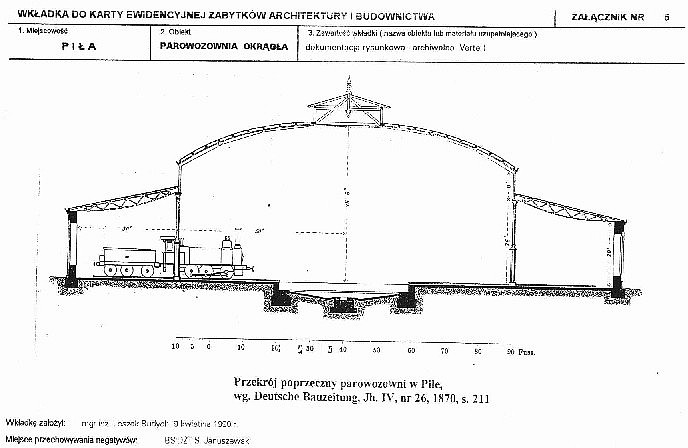
THE EASTERN RAILWAY - A HISTORICAL MONUMENT AROUND PILA (SCHNEIDEMUEHL)
On July 27th, 1851, the first section of the Prussian "Eastern Railway" (Ostbahn) had been opened between the towns Kreuz (nowadays Krzyz - Poland) - Schneidemuehl (Pila) and Bromberg (Bydgoszcz). On August 6th, 1852, the section leading to Danzig (Gdansk) through Dirschau (Trzew) was added. One year later, the connection to Königsberg (nowadays Kaliningrad - Russia) came into being. In 1867, the direct relation from Berlin via Küstrin to Schneidemuehl was also finally established.
The published above drawing is a copy of nowadays' Polish Cultural Heritage Authorities according to those the historical Eastern Railway Roundhouse at Pila is a monument of European importance. Exactly the same building was being built in Berlin (and also still exists).
The actual state of the historical Roundhouse at Pila (Schneidemühl) is being shown by the following photographs:
According to
the historical construction of the building, Polish Railways authorities built additional attics. The formerly red bricks have been painted with white colour.
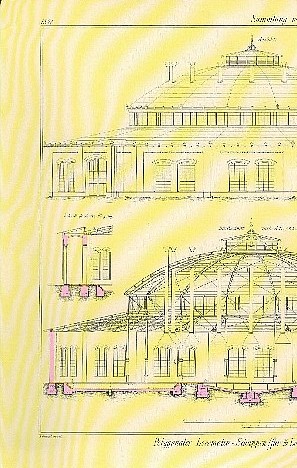
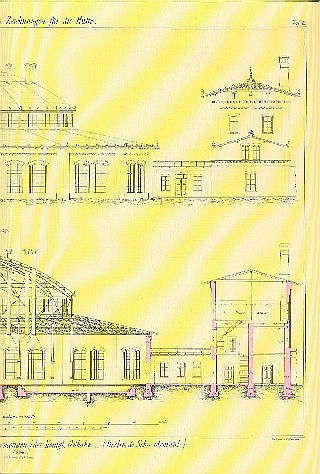 The building
at right hand side, in former times was the water tower of the
railway site.
The building
at right hand side, in former times was the water tower of the
railway site.
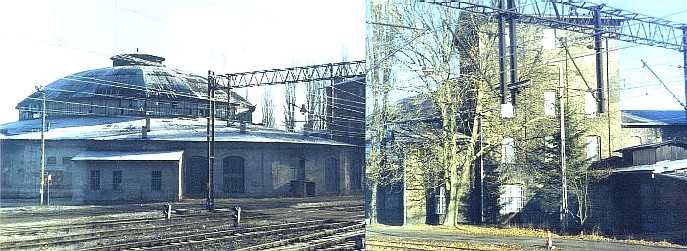
Nowadays, there is a seperate water tower on the site, also a classified historical monument.
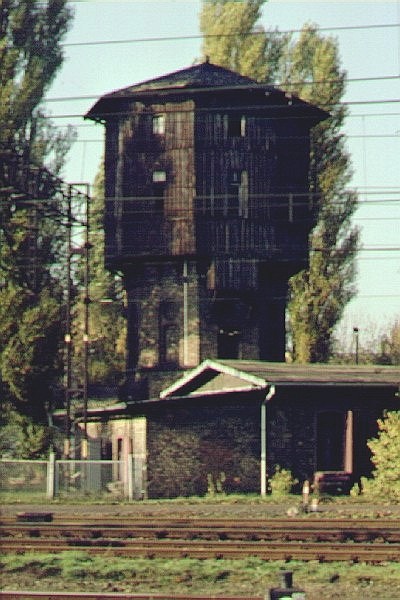
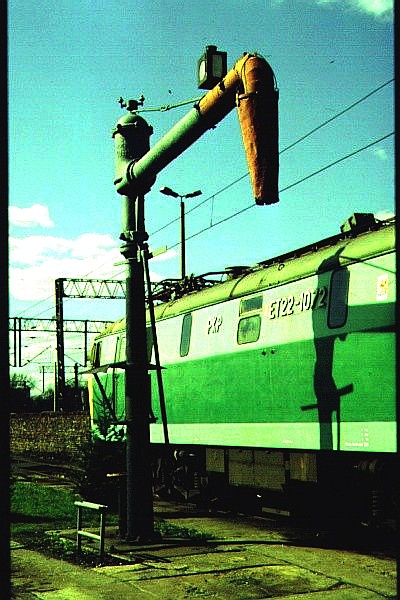
(2 photographs: Jean-Pierre HOFER) The former water tower building nowadays is turned to offices.
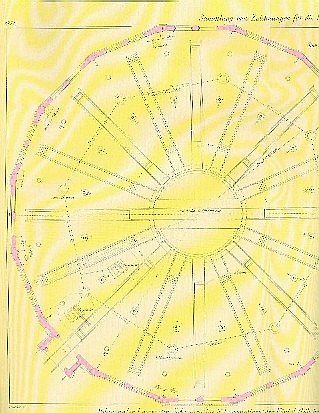
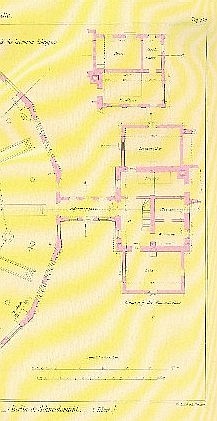 This historical drawing shows the
dimensions of the Roundhouse with the turn table inmidst the
building.
This historical drawing shows the
dimensions of the Roundhouse with the turn table inmidst the
building.
Some details of the construction are being presented by the following drawing.
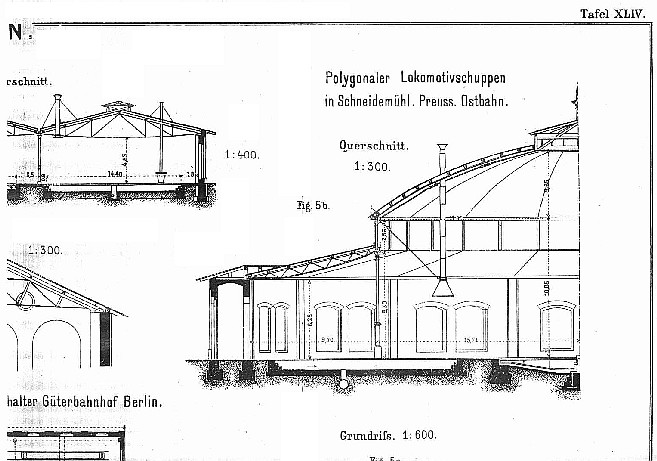
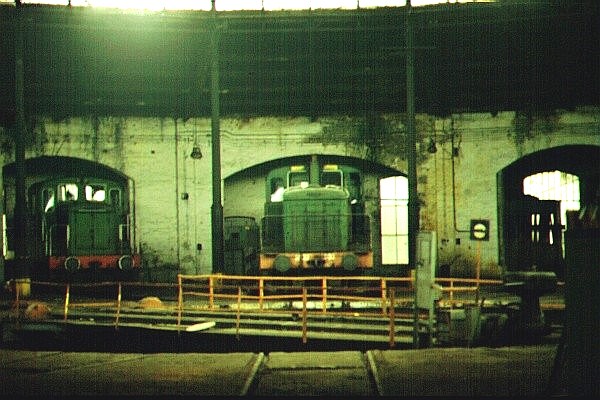
The photograph above (author: J.-P. Hofer) gives an actual inside view of the historic roundhouse. This ancient time table shows the importance of the "Eastern Railway" for this part of Central Europe, once the railway had been established.
In 1922, the majority of the population of the Schneidemühl region voted to stay within the border of Germany. The border between Germany and Poland was hence established several kilometers aside Schneidemuehl, at Usch (nowadays Ujscie) aside the river. The historical border fence inmidst the Ujscie river may still be seen.
Pila, being a historical railway town with the Ancient Prussian (nowadays Polish) steam locomotive repair workshop dating back from 1905 (RAW Schneidemühl >> ZNTK Pila >> INTERLOK Pila) is an ideal place to develop current railway business. The Roundhouse and the buildings aside might be a centre for locomotives, a "living museum" gathering European Union's subsidiaries, and a place for repairs. The following photograph shows the modern locomotive roundhouse that might also be used for rail business.
The situation of the old and the modern Roundhouse may be seen on the following official PKP drawing.
The situation of Pila is being shown by the following map (author Nick Sbarounis):
The situation of Pila makes it understandable that, for example, the town is an easy place to establish steam specials to the German-Polish border (direction Berlin), or to the Polish steam "capital" Wolsztyn (via Poznan).